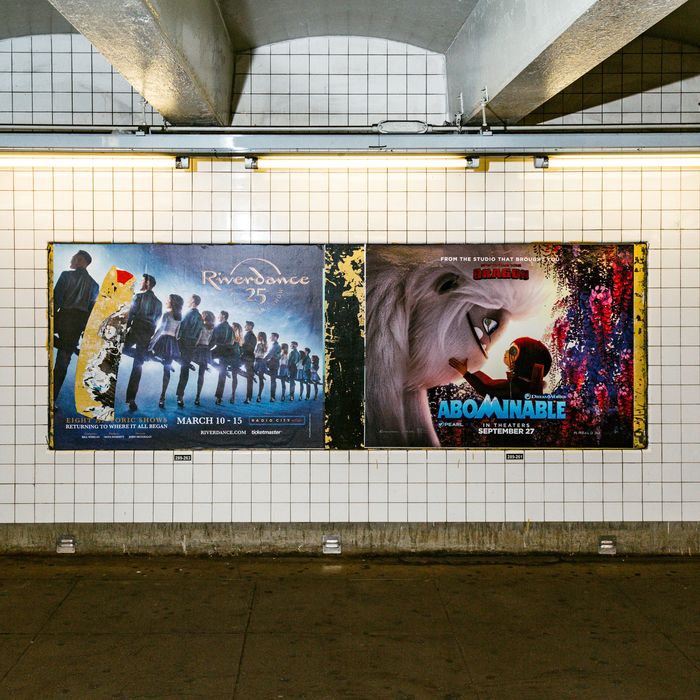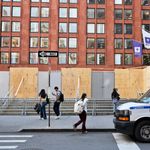
Standing on a subway platform now, it looks as if Riverdance’s big 25th anniversary show just opened, David Byrne’s American Utopia is still enjoying a limited Broadway run, and Mrs. America, the Phyllis Schlafly miniseries, is set to hit Hulu next month — April 2020. In stations across New York City, LaKeith Stanfield and Issa Rae have now been touching foreheads in ads for The Photograph for two Valentine’s Days. It’s the same on the streets: Cars driving into the Midtown Tunnel from Queens throughout the year were reminded that A Quiet Place Part II was supposed to open on March 20; the film won’t hit theaters until this May, but the billboard stayed up nearly until March 2021.
The zombie ads have stayed up simply because no one is buying new ones. Outfront Media, the company that handles the advertising in MTA stations and trains, reported spending on transit ads was down 76 percent and billboard spending was down 36 percent for the first half of the year, according to the company’s August earnings call. Billboard and subway space in the city were discounted as much as 85 or 90 percent in the spring, says Brian Rappaport, CEO Quan Media Group, a New York–based advertising agency. “My industry is called outdoor advertising and people were being told not to go outdoors,” he says.
Going back and forth from Long Island this summer, he started to wince at that Quiet Place billboard taunting drivers with the word March, the month that felt like it never ended. “If I’m the studio, I’m like, ‘Take this down,’” he says. “It’s a bad look.”
But blank ad squares are bad business when you’re trying to sell more ads in big transit systems like the MTA, according to Andy Seraita, the director of outdoor advertising for Inspiria, which places ads on subways, buses, and billboards around the city. So instead of sending in a crew to remove, say, a massive Quibi billboard that far outlasted the short-form, short-lived streaming service itself, these zombie ads are just left up.
This is by no means the first time a major upheaval has haunted the city with old ads. When white flight happened in the 1950s and ’60s, “they picked up and left and they took all the services with them and left behind the signs of all those stores on all those buildings,”, according to Frank Jump, who wrote the book Fading Ads of New York City in 2011. “It’s just the way we kind of mark time in a way in the city. It’ll be interesting to see what becomes the ghost ads of this era.”
The ghost ads of 2020 stand in stark contrast to the new ones that have gone up: anti-microbial clean wraps for grabbing a Citi Bike, touchless payment, designer masks. Last year, Cellino & Barnes, the injury attorneys behind the ubiquitous billboards, broke up shortly before Barnes died in a plane crash. In a year when not much changed, the injury-attorney ad space has changed dramatically, with Cellino Law billboards blanketing the city and trains. You can find a Barnes looking out over many a bus stop, but it’s a new one: Steve’s brother Rich, who took over his brother’s firm.
For all the ways they have muddled our sense of time, this is likely the last era of ghost ads. Outfront has contracted with the MTA to add more than 31,000 more digital ad screens to subway stations and trains, and will remove 24,000 slots for physical ads over the next 11 years. In the near future, there will be no more zombie ads, only bright, constantly updated screens. “The days of print ads in the system are kind of on their last legs,” an MTA spokesman told me.






